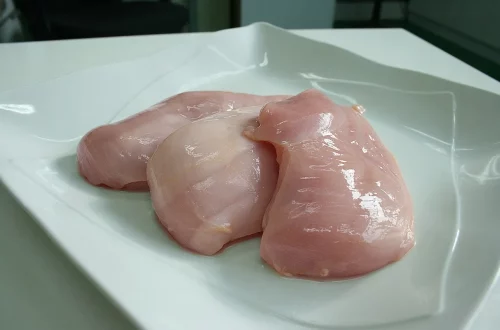
Canine Mast Cell Tumors: Understanding with Photos and Insights
Understanding canine mast cell tumors is crucial for dog owners and enthusiasts alike. These tumors, often appearing as lumps or bumps on the skin, can be alarming when discovered. They are one of the most common types of skin tumors in dogs and are known for their unpredictable nature. Mast cell tumors arise from mast cells, which are a type of white blood cell involved in inflammatory responses and allergies. When these cells become malignant, they can lead to various health issues that range from locally aggressive to potentially life-threatening.
The diagnosis of mast cell tumors can bring a mix of emotions, from confusion to concern, as the implications of such a diagnosis can vary significantly. While some tumors may be benign and easily treatable, others can be aggressive and require extensive medical intervention. Understanding the characteristics of these tumors, their treatment options, and the importance of regular veterinary check-ups can empower dog owners to take proactive steps in managing their pets’ health.
In this article, we will explore the various aspects of canine mast cell tumors, aiming to provide insights and useful information for pet owners. We will look into the types of mast cell tumors, their symptoms, diagnosis, treatment options, and some helpful photographs to illustrate these conditions.
Types of Mast Cell Tumors in Dogs
Mast cell tumors (MCTs) in dogs can be classified into different types based on their histological grade and behavior. Understanding these types is essential for determining the appropriate course of action for treatment and management.
The most common classification of mast cell tumors includes Grade I, Grade II, and Grade III tumors. Grade I tumors are typically well-differentiated and have a better prognosis. They are less likely to metastasize and are often treated successfully with surgical removal. These tumors may appear as small, firm lumps on the skin and are usually not aggressive.
Grade II tumors are considered intermediate and can exhibit varying behavior. They may have a potential for local invasion and metastasis. The treatment for Grade II tumors often involves surgery, but additional therapies such as chemotherapy or radiation may be recommended based on the tumor’s behavior and other factors.
Grade III tumors are poorly differentiated and are the most aggressive form of mast cell tumors. They tend to metastasize quickly and have a poor prognosis. Treatment for Grade III tumors is more complex and may include a combination of surgery, chemotherapy, and other supportive therapies.
Another classification system is based on the location of the tumors, which can be cutaneous (skin) or visceral (internal organs). Cutaneous mast cell tumors are the most commonly diagnosed and are usually found on the skin. Visceral mast cell tumors can occur in various internal organs, including the spleen and liver, and may present more severe clinical signs due to their impact on organ function.
Recognizing the type of mast cell tumor is crucial for guiding treatment decisions. Regular veterinary check-ups and monitoring any skin changes are essential for early detection and intervention. With an understanding of the different types of mast cell tumors, pet owners can better advocate for their dog’s health and well-being.
Symptoms and Clinical Signs
Identifying the symptoms of mast cell tumors in dogs is crucial for early detection and treatment. These tumors can manifest in various ways, and the clinical signs often depend on the tumor’s location, size, and grade.
The most common symptom is the appearance of a lump or bump on the skin. These masses can vary in size, shape, and color, ranging from small nodules to larger, ulcerated lesions. They may be firm or soft to the touch and can sometimes be mistaken for benign growths or cysts. It is essential for dog owners to monitor their pets regularly for any changes in the skin, including new growths or modifications to existing lumps.
In some cases, mast cell tumors can cause more systemic symptoms due to the release of histamine and other inflammatory mediators. This can lead to symptoms such as vomiting, diarrhea, lethargy, and loss of appetite. Dogs may also experience allergic reactions, which can manifest as itching, swelling, or hives.
Other signs may include changes in behavior, increased thirst, or signs of pain. When mast cell tumors metastasize to other organs, such as the spleen or liver, symptoms may become more severe. These can include abdominal swelling, jaundice, or difficulty breathing, depending on the organs affected.
Given the variability in symptoms and the potential for mast cell tumors to behave aggressively, it is vital for dog owners to consult with a veterinarian if they notice any unusual changes in their pets. Early detection and intervention can significantly improve the prognosis and overall quality of life for dogs diagnosed with mast cell tumors.
Diagnosis and Treatment Options
Diagnosing mast cell tumors in dogs involves a combination of physical examination, diagnostic imaging, and histopathological evaluation. When a suspicious lump is identified, a veterinarian will typically perform a fine-needle aspiration (FNA) to collect cells from the tumor for cytological examination. This procedure is minimally invasive and can provide preliminary information about the nature of the tumor.
If the FNA reveals mast cell tumor characteristics, further diagnostic steps may include biopsy and histopathological evaluation to determine the tumor’s grade and type. Additional imaging, such as X-rays or ultrasound, may be recommended to check for metastasis or involvement of internal organs.
Once a diagnosis is confirmed, treatment options will depend on several factors, including the tumor’s grade, location, and whether it has spread. Surgical removal is often the primary treatment for mast cell tumors, especially for Grade I and some Grade II tumors. The goal of surgery is to excise the tumor along with a margin of healthy tissue to minimize the risk of recurrence.
For more aggressive tumors (Grade II and Grade III), additional treatments may be necessary. Chemotherapy can be an effective option, particularly in cases where the tumor has metastasized or when surgery alone may not suffice. Certain medications, such as corticosteroids, can also help manage symptoms and reduce inflammation associated with mast cell tumors.
In some cases, targeted therapies and newer treatment modalities are being explored, providing hope for improved outcomes. The decision for treatment should always be made in consultation with a veterinarian, who can offer guidance based on the individual dog’s condition and needs.
Supportive care is also an important aspect of managing dogs with mast cell tumors. This includes regular veterinary follow-ups, pain management, and monitoring for any side effects from treatments. A holistic approach that includes proper nutrition and a stress-free environment can also contribute positively to the overall well-being of dogs undergoing treatment for mast cell tumors.
Prognosis and Preventive Measures
The prognosis for dogs diagnosed with mast cell tumors can vary widely, depending largely on the tumor’s grade and the effectiveness of treatment. Grade I tumors generally have a good prognosis, with many dogs living long and healthy lives post-surgery. Grade II tumors may have variable outcomes, while Grade III tumors often indicate a poorer prognosis due to their aggressive nature.
Regular veterinary check-ups and monitoring are essential for early detection of any new tumors or recurrence of existing ones. Dog owners should be vigilant about observing their pets for any changes in their skin or overall health. Early intervention can significantly improve outcomes and quality of life.
Preventive measures can also play a crucial role in managing the health of dogs at risk for mast cell tumors. While it is impossible to prevent these tumors entirely, maintaining a healthy lifestyle for pets can contribute to their overall well-being. This includes providing a balanced diet, ensuring regular exercise, and minimizing exposure to environmental toxins.
Additionally, spaying or neutering dogs may reduce the risk of developing certain types of tumors, including some mast cell tumors. Regular grooming can help in the early detection of lumps and bumps, allowing for prompt veterinary attention when necessary.
Awareness and education about mast cell tumors and canine health can empower dog owners to make informed decisions regarding their pets. By staying proactive and involved in their dog’s health care, owners can help ensure their furry companions lead happy, healthy lives.
—
**Disclaimer:** This article is intended for informational purposes only and should not be considered medical advice. Always consult with a qualified veterinarian for health concerns regarding your pets.




